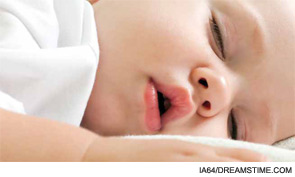Despite these differences, Dr. Shott said the inherent benefit of a guideline is to present a consensus opinion on a subject that not everyone will agree with. "All of us practice somewhat differently and probably disagree with each other on various specific points within the guideline," she said, adding that a guideline "should take a middle-of-the road approach to reflect disparity of support services nationwide while promoting patient safety and quality of care."
Explore This Issue
August 2011
Joseph Kerschner, MD, professor of otolaryngology and communication science at the Medical College of Wisconsin in Milwaukee, Wis., who generally agrees with the guidelines, said they weren’t written to address the bulk of children who are seen outside of major children’s hospitals and academic health centers. "Most sleep-disordered breathing is managed outside of these centers, and these guidelines really address the most complex children with sleep issues and weren’t written to address the average child suspected of sleep-disordered breathing," he said.
He added that he does not expect the guidelines to have a large impact on the broader population of children who undergo surgery for sleep-disordered breathing.
Dr. Kerschner emphasized that children with complex problems who are defined as high risk require a high level of expertise from both the surgeon and the entire team to mitigate the potential for complications that may arise during a tonsillectomy. "These operations are not to be taken lightly," he said.
Portable Monitoring Devices
Among the gaps in research identified in the guidelines is the use of portable monitoring devices to provide some objective data when an overnight PSG is not feasible. The guidelines make clear that a PSG remains the gold standard and should be used when indicated.
"What we are saying in the guidelines is that the evidence supports the use of full-night, lab-based sleep studies, and there is not enough evidence to say yes or no to monitoring," Dr. Mitchell said. He emphasized that more research is needed to identify the role of portable monitoring, which, he said, could have an important and extensive future role. ENT TODAY
Leave a Reply